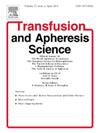复发和超越:导航免疫血栓性血小板减少性紫癜的长期临床影响
IF 1.2
4区 医学
Q4 HEMATOLOGY
引用次数: 0
摘要
免疫性血栓性血小板减少性紫癜(iTTP)是一种罕见但危及生命的血栓性微血管疾病,其特征是针对ADAMTS13的自身抗体,导致超大型血管性血液病多聚体积累,全身血小板微血栓,终末器官损伤,如果不治疗则会导致死亡。几十年来,血浆交换治疗和皮质类固醇治疗一直是主要的治疗方法,但在初始急性发作后存在显著的复发潜力。虽然免疫疗法(如利妥昔单抗和卡普拉珠单抗)的最新进展显著改善了急性生存率和短期恶化/复发预防,但该疾病的长期并发症仍然是幸存者关注的问题。这篇叙述性综述讨论了优化iTTP后缓解期护理的挑战,强调了疾病对神经、心血管和心理健康的影响。据报道,iTTP幸存者存在慢性认知障碍、高血压和缺血性事件风险增加以及焦虑和抑郁等心理健康挑战。此外,复发风险和持续的ADAMTS13缺乏可能决定了对潜在复发进行长期监测和个体化治疗的必要性。我们强调多学科、以患者为中心的管理的重要性,不仅在管理和预防iTTP复发发作方面,而且在改善这种罕见疾病幸存者的生活质量和降低发病率方面。提供者应提高对长期并发症和幸存者复发的非典型表现的认识。我们提倡进一步的研究和观察队列研究,以制定标准化的监测和干预指南,以减轻iTTP的慢性负担。本文章由计算机程序翻译,如有差异,请以英文原文为准。
Relapse and beyond: Navigating the long-term clinical impacts of immune thrombotic thrombocytopenic purpura
Immune Thrombotic thrombocytopenic purpura (iTTP) is a rare but life-threatening thrombotic microangiopathy characterized by an autoantibody against ADAMTS13, leading to accumulation of ultra-large von Willebrand multimers, systemic platelet microthrombi, end-organ damage, and mortality if untreated. Therapeutic plasma exchange and corticosteroids have been the mainstay therapy for decades, but there exists significant relapse potential after the initial acute episode. While more recent advances in the use of immunotherapy (e.g. rituximab and caplacizumab) have significantly improved acute survival and short-term exacerbation/relapse prevention, long-term complications of the disease remain a concern for survivors. This narrative review discusses challenges of optimizing post-remission care after iTTP, highlighting disease impact on neurological, cardiovascular, and psychological health. Chronic cognitive impairment, increased risk of hypertension and ischemic events, and mental health challenges such as anxiety and depression are reported in iTTP survivors. Moreover, recurrence risk and persistent ADAMTS13 deficiency may define the need for long-term monitoring and individualized treatment of potential relapse. We emphasize the importance of multidisciplinary, patient-centered management, not only in the management and prevention of iTTP relapse episodes, but to improve quality of life and reduce morbidity in survivors of this rare disease. Providers should possess heightened awareness of long-term complications and atypical manifestations of relapse in survivors. We advocate for further research and observational cohort studies to formulate standardized guidelines for surveillance and intervention to mitigate the chronic burden of iTTP.
求助全文
通过发布文献求助,成功后即可免费获取论文全文。
去求助
来源期刊
CiteScore
3.60
自引率
5.30%
发文量
181
审稿时长
42 days
期刊介绍:
Transfusion and Apheresis Science brings comprehensive and up-to-date information to physicians and health care professionals involved in the rapidly changing fields of transfusion medicine, hemostasis and apheresis. The journal presents original articles relating to scientific and clinical studies in the areas of immunohematology, transfusion practice, bleeding and thrombotic disorders and both therapeutic and donor apheresis including hematopoietic stem cells. Topics covered include the collection and processing of blood, compatibility testing and guidelines for the use of blood products, as well as screening for and transmission of blood-borne diseases. All areas of apheresis - therapeutic and collection - are also addressed. We would like to specifically encourage allied health professionals in this area to submit manuscripts that relate to improved patient and donor care, technical aspects and educational issues.
Transfusion and Apheresis Science features a "Theme" section which includes, in each issue, a group of papers designed to review a specific topic of current importance in transfusion and hemostasis for the discussion of topical issues specific to apheresis and focuses on the operators'' viewpoint. Another section is "What''s Happening" which provides informal reporting of activities in the field. In addition, brief case reports and Letters to the Editor, as well as reviews of meetings and events of general interest, and a listing of recent patents make the journal a complete source of information for practitioners of transfusion, hemostasis and apheresis science. Immediate dissemination of important information is ensured by the commitment of Transfusion and Apheresis Science to rapid publication of both symposia and submitted papers.

 求助内容:
求助内容: 应助结果提醒方式:
应助结果提醒方式:


